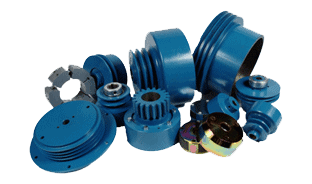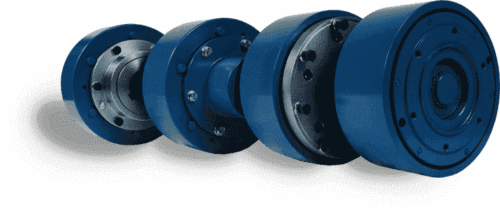The Importance of Centrifugal Clutches in Engines
Leave a CommentCentrifugal clutches are integral to the operation of many mechanical devices and systems. By transmitting power between the driving components and the driven components, they enable machines to start and stop operations as needed. Below, we discuss how these devices work and what role they play with engines.

How Do Centrifugal Clutches Work?
All clutches stop and start the transmission of power by engaging and disengaging the driving shaft and the driven shaft. The exact power transmission method and mechanism depends on the type of clutch used. For instance, centrifugal clutches rely on centrifugal force to automatically engage and disengage the shafts.
The centrifugal clutch design consists of a drum attached to an output shaft, sheave, or sprocket that contains internal flyweights. As the power source revs, the driving shaft turns, which produces centrifugal force within the clutch. The force generated is relative to the input speed—lower speeds generate lower centrifugal force, while higher speeds generate higher centrifugal force. At a certain speed, the centrifugal speed is sufficient enough to force the flyweights to move outward, which makes them come into contact with the inside of the drum. This contact causes the drum to rotate and gradually engage the clutch. If the speed decreases below the engagement point, the flyweights retract, the drum rotation stops, and the clutch disengages.
What Role Do Centrifugal Clutches Play in Engines?
In engine-powered systems, centrifugal clutches are found between the engine flywheel and the transmission. They connect the engine driveshaft to the transmission shaft only once there is sufficient power. This protects the engine during startup/shutdown and prevents continuous operation when it is idled down.
Generally, centrifugal clutches are integrated into mobile equipment with high-speed rotational parts driven by small engines. Typical small engine applications for centrifugal clutches include:
- Groundskeeping and landscaping equipment, such as cutters and mowers
- Mining equipment, such as vibratory compactors, pumps, and rollers
- Wood processing equipment, such as grinders, mills, and woodchippers
While centrifugal clutches can be used in a wide range of applications, they are not appropriate for every application. For example, they are not suitable for applications involving the transfer of high torque or power since they exhibit a tendency to slip if the load is too heavy. Additionally, they are not suitable for applications requiring high-reliability disengagement.
Centrifugal Clutches for Engines from BLM
Centrifugal clutches are critical components of engine-powered machinery. When properly chosen for the given application, they can eliminate shock loading of the powertrain, enable smooth acceleration, and protect the motor and machine from overloading.
Need centrifugal clutches for your engine-based systems? The experts at BLM Automatic Clutch are here to help! Our Four Block Series clutches (1/4 to 50 hp) are suitable for small equipment (e.g., chippers, concrete pumps, conveyors, mortar mixers, refrigeration systems, and tampers), while our Six Block Series clutches (up to 3,000 hp) are suitable for large industrial and commercial equipment (e.g., brake drums, crushers, centrifuges, fans, pumps, and textile machinery). Additionally, our team can design and manufacture custom centrifugal clutches with fractional to 3,000 hp input speeds capacities.
All of our clutches are carefully engineered to allow for:
- Automatic engagement/disengagement
- Motor start without load
- Smooth acceleration without shock
- Use of smaller motors
- Slip in overload conditions
- Low-energy startup
- Simple and quick maintenance
To learn more about our standard and custom centrifugal clutch offerings, contact us today. To discuss your specific clutch requirements and restrictions with one of our experts, request a quote.

 800.268.4295
800.268.4295

